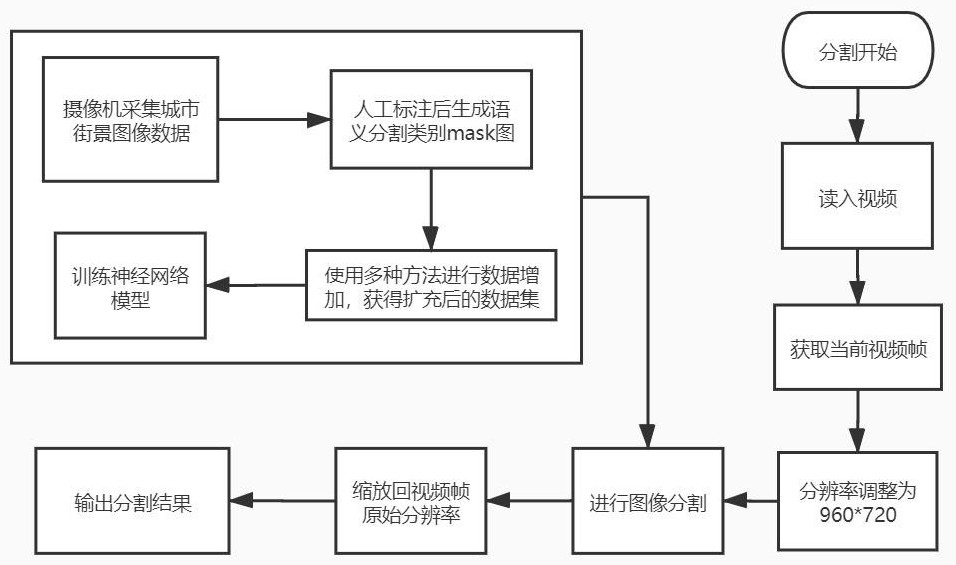Semantic segmentation method in autonomous driving scenarios based on bisenet
A semantic segmentation and automatic driving technology, applied in scene recognition, combustion engine, internal combustion piston engine, etc., can solve the problem of time-consuming, and achieve the effect of small model size, good convergence and high accuracy
- Summary
- Abstract
- Description
- Claims
- Application Information
AI Technical Summary
Problems solved by technology
Method used
Image
Examples
Embodiment Construction
[0046] The present invention will be further described below with reference to the accompanying drawings and embodiments.
[0047] Please refer to figure 1 , the present invention provides a kind of semantic segmentation method under the automatic driving scene based on BiSeNet, comprises the following steps:
[0048] Step S1: collecting urban street image data and preprocessing;
[0049] Step S2: label the preprocessed image data to obtain labelled image data;
[0050] Step S3: performing data enhancement on the marked image data, and using the enhanced image data as a training set;
[0051] Step S4: build a BiSeNet neural network model, and train the model based on the training set;
[0052] Step S5: Preprocess the video information collected by the camera, and perform semantic segmentation on the city streets in the camera according to the trained BiSeNet neural network model.
[0053] Further, the step S1 is specifically:
[0054] Step S11: analyze the categories that...
PUM
 Login to View More
Login to View More Abstract
Description
Claims
Application Information
 Login to View More
Login to View More - R&D
- Intellectual Property
- Life Sciences
- Materials
- Tech Scout
- Unparalleled Data Quality
- Higher Quality Content
- 60% Fewer Hallucinations
Browse by: Latest US Patents, China's latest patents, Technical Efficacy Thesaurus, Application Domain, Technology Topic, Popular Technical Reports.
© 2025 PatSnap. All rights reserved.Legal|Privacy policy|Modern Slavery Act Transparency Statement|Sitemap|About US| Contact US: help@patsnap.com



